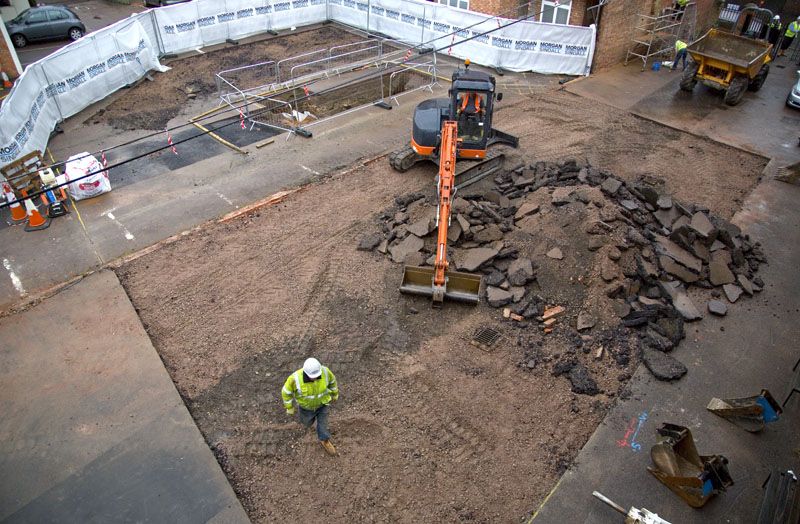Dig Begins at Richard III's Final Resting Place

A fresh excavation began Monday (July 1) at the site of Richard III's resting place.
The location of the king's grave had been lost to history, but archaeologists found his remains last year under a parking lot in Leicester, England, in the buried ruins of the medieval Grey Friars church.
In this summer's month-long dig, researchers from the University of Leicester plan to further investigate the church, paying special attention to the choir area, where Richard's body was discovered. [Gallery: The Discovery of Richard III]
"We hope this dig will expand the context of Richard III's grave," Richard Buckley, lead archaeologist, said in a statement. "We also want to preserve the grave's relationship with the rest of the site."
In their 82-by-55-foot (25-by-17-meter) trench, Buckley and his team will also examine other burials uncovered at Grey Friars, including a stone coffin suspected to belong to a medieval knight named Sir William Moton or one of the founders of the friary, possibly Peter Swynsfeld or William of Nottingham.
And the archaeologists will be looking out for evidence of headless friars. According to a grim piece of church lore, a group of Leicester grey friars was hanged for treason in 1402 after giving money to rebels who were trying to topple Henry IV. Their severed heads were displayed on the London Bridge, while it's thought that the rest of their bodies were brought back to Leicester.
"What drives us with the project is learning more about medieval Leicester and one of its great religious houses," Buckley said. "We hope this dig is going to give us a definitive plan of the dimensions and architecture of the church. We may be able to recover more fragments. We might learn more about the dissolution of the church, and we might learn more about what was there before the friary."
Sign up for the Live Science daily newsletter now
Get the world’s most fascinating discoveries delivered straight to your inbox.
Richard ruled England from 1483 until his death in 1485 in battle during the War of the Roses. Relying on historical records, Buckley and his team started digging beneath the Leicester City Council parking lot on Aug. 25, 2012, looking for the king's grave. They soon found the Grey Friars church and then a battle-bruised male skeleton with a spine curved by scoliosis.
In February, researchers announced that DNA from the teeth and a bone matched with a modern relative of the Richard. The body eventually will be reinterred in the Leicester Cathedral and a visitor center is being built at the site to showcase some of the finds.
A viewing platform is also being built so that the public will be able to watch the dig in process from the second week of July on, according to the University of Leicester.
Follow Megan Gannon on Twitterand Google+. Follow us @livescience, Facebook& Google+. Original article on LiveScience.com.










